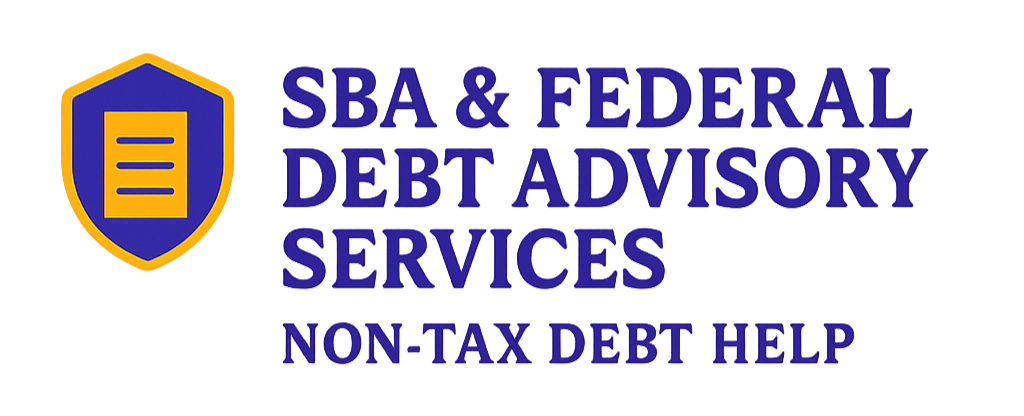
Do Federal Debt Collections Continue During a Government Shutdown?
Shutdown or not, parts of federal non-tax debt collection keep moving. Here is what continues, what may slow down by agency, and what to do now to protect your paycheck.
What Actually Continues
Federal non-tax debt collection relies on systems that do not pause just because Congress has not passed a funding bill.
- Treasury Offset Program (TOP) continues and can apply an offset to eligible federal payments.
- Debts in Cross-Servicing with the Bureau of the Fiscal Service continue moving through established processes.
- Active wage garnishment orders can keep withholding until an official decision changes them.
Quick truth: A shutdown does not automatically stop offsets or a valid wage garnishment.
What May Slow Down
Some agency-specific offices may reduce live phone coverage or move slower on manual tasks like mail intake or case review. The details vary by agency. Bureau of the Fiscal Service Cross-Servicing operations continue, and automated systems like TOP continue. A delay at a specific office does not cancel the debt or extend a deadline unless you receive written notice.
What To Do Right Now
1. Open every letter and keep the envelopes. Note postmark and letter dates.
2. Request proof of debt if you have not received it. FS Form 13 authorizes release of information so an advocate can request documents on your behalf.
3. If you received a Notice of Intent to Initiate Wage Garnishment, you can request a hearing. You may challenge existence, amount, or financial hardship.
4. Document hardship early. List income and necessary expenses. The Bureau of the Fiscal Service provides a financial disclosure form that helps you organize this.
5. Track payroll timing. If your employer received a garnishment order, the start date aligns with payroll cycles.
If Your 15-Day Window Passed
You can still submit a hearing request after 15 days. Garnishment may continue for up to 60 days while the decision is pending. The request will still be reviewed. If more information is needed, the hearing official will ask for it.
Quick Answers At A Glance
- Will offsets stop during a shutdown? No. Treasury Offset Program continues and can apply an offset to eligible federal payments.
- Will someone review my hearing request? Reviews may continue, but timelines can vary by agency staffing.
- Can I ask for a hardship review? Yes. Provide complete documentation.
- Who handles my hearing? Some agencies run their own. The Bureau of the Fiscal Service conducts records reviews and forwards requests to the correct office when required.
- Where do I start? Use the official hearing request page to access the request form and financial disclosure forms.
Helpful Resources
- BFS hearing request and financial disclosure forms (English and Spanish): https://fiscal.treasury.gov/cross-servicing/awg/awg-individual.html
- Administrative Wage Garnishment calculator: https://fiscal.treasury.gov/cross-servicing/awg/awg-calculator.html
How We Can Help, Step by Step
Send us the letters you received. We will review the notices, decode what each one means, and map your deadlines. If you choose to work with us, we can help you:
- Request proof of debt the right way. FS Form 13 authorizes release of information so we can request documents on your behalf.
- Prepare and submit a hearing request, including existence, amount, or financial hardship.
- Organize your financial disclosure with income and expenses so your hardship claim is clear.
- Track timelines and follow up so you do not miss a required response.
- Communicate with the correct office and keep you informed about what happens next.
Plain talk: You do not have to figure this out alone. We will walk you through each step and keep you on time.
Reassurance From Your Advocate
Shutdown headlines are stressful. Steady action wins. Open the mail, mark dates, keep records, and ask for help early.
Disclaimer: This resource is for informational purposes only and is not legal advice. SBA & Federal Debt Advisory Services is not a law firm and does not provide legal representation. We support individuals navigating federal debt processes as advocates and consultants. If your situation requires legal advice, you may wish to consult an attorney. This resource was created by SBA & Federal Debt Advisory Services. Learn more at NonTaxDebtHelp.com or schedule your free 15-minute consultation at: SBA & Federal Debt Advisory Services


 DisclaimerDisclaimer
DisclaimerDisclaimerLooking for more support and straight answers?
Check out these helpful posts:
Can the U.S. Bureau of the Fiscal Service Really Garnish My Wages?
From Your Advocate’s Desk – Real Talk & Reassurance

Do Federal Debt Collections Continue During a Government Shutdown?
Shutdown or not, parts of federal non-tax debt collection keep moving. Here is what continues, what may slow down by agency, and what to do now to protect your paycheck.
What Actually Continues
Federal non-tax debt collection relies on systems that do not pause just because Congress has not passed a funding bill.
- Treasury Offset Program (TOP) continues and can apply an offset to eligible federal payments.
- Debts in Cross-Servicing with the Bureau of the Fiscal Service continue moving through established processes.
- Active wage garnishment orders can keep withholding until an official decision changes them.
Quick truth: A shutdown does not automatically stop offsets or a valid wage garnishment.
What May Slow Down
Some agency-specific offices may reduce live phone coverage or move slower on manual tasks like mail intake or case review. The details vary by agency. Bureau of the Fiscal Service Cross-Servicing operations continue, and automated systems like TOP continue. A delay at a specific office does not cancel the debt or extend a deadline unless you receive written notice.
What To Do Right Now
1. Open every letter and keep the envelopes. Note postmark and letter dates.
2. Request proof of debt if you have not received it. FS Form 13 authorizes release of information so an advocate can request documents on your behalf.
3. If you received a Notice of Intent to Initiate Wage Garnishment, you can request a hearing. You may challenge existence, amount, or financial hardship.
4. Document hardship early. List income and necessary expenses. The Bureau of the Fiscal Service provides a financial disclosure form that helps you organize this.
5. Track payroll timing. If your employer received a garnishment order, the start date aligns with payroll cycles.
If Your 15-Day Window Passed
You can still submit a hearing request after 15 days. Garnishment may continue for up to 60 days while the decision is pending. The request will still be reviewed. If more information is needed, the hearing official will ask for it.
Quick Answers At A Glance
- Will offsets stop during a shutdown? No. Treasury Offset Program continues and can apply an offset to eligible federal payments.
- Will someone review my hearing request? Reviews may continue, but timelines can vary by agency staffing.
- Can I ask for a hardship review? Yes. Provide complete documentation.
- Who handles my hearing? Some agencies run their own. The Bureau of the Fiscal Service conducts records reviews and forwards requests to the correct office when required.
- Where do I start? Use the official hearing request page to access the request form and financial disclosure forms.
Helpful Resources
- BFS hearing request and financial disclosure forms (English and Spanish): https://fiscal.treasury.gov/cross-servicing/awg/awg-individual.html
- Administrative Wage Garnishment calculator: https://fiscal.treasury.gov/cross-servicing/awg/awg-calculator.html
How We Can Help, Step by Step
Send us the letters you received. We will review the notices, decode what each one means, and map your deadlines. If you choose to work with us, we can help you:
- Request proof of debt the right way. FS Form 13 authorizes release of information so we can request documents on your behalf.
- Prepare and submit a hearing request, including existence, amount, or financial hardship.
- Organize your financial disclosure with income and expenses so your hardship claim is clear.
- Track timelines and follow up so you do not miss a required response.
- Communicate with the correct office and keep you informed about what happens next.
Plain talk: You do not have to figure this out alone. We will walk you through each step and keep you on time.
Reassurance From Your Advocate
Shutdown headlines are stressful. Steady action wins. Open the mail, mark dates, keep records, and ask for help early.
Disclaimer: This resource is for informational purposes only and is not legal advice. SBA & Federal Debt Advisory Services is not a law firm and does not provide legal representation. We support individuals navigating federal debt processes as advocates and consultants. If your situation requires legal advice, you may wish to consult an attorney. This resource was created by SBA & Federal Debt Advisory Services.
